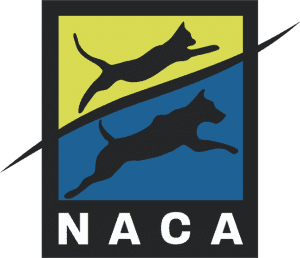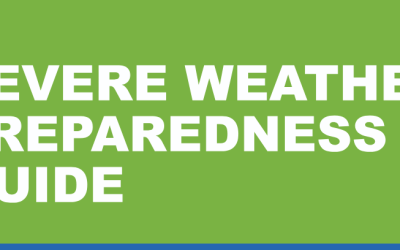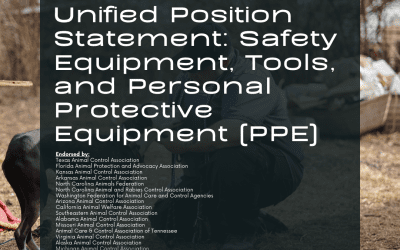!! NACA Alert !!
Across the U.S., Animal Services Agencies Face Unprecedented Hardships
We know you feel it, we feel it too! All across the U.S., animal services agencies are facing unprecedented hardships like short staffing, full shelters, and high emotions. If we have learned anything these past few COVID years, it’s that life can be unpredictable and no matter how hard we prepare, we are likely to experience the stress of it all.
From hospitals to child welfare agencies to airports, from homelessness services to restaurants, virtually every industry and sector are facing service disruptions and huge challenges due to the impacts of the COVID pandemic. Animal services organizations are no exception. Animal services and animal control organizations across the U.S. are experiencing short-staffing as well as higher-than-usual animal inventories, along with record-reported levels of stress and burnout among workers. Some of the specific challenges facing animal services agencies are:
- National animal shelter software data shows that while intake has not yet reached 2019 pre-pandemic levels, animal shelters are full. The data further shows that this is due to pet adoptions and transports slowing dramatically, and both cats and dogs are spending up to twice the number of days (from an average of 40 days to 80 days) in animal services custody.
- Short staffing in all positions, especially forward-facing staff, animal control officers, veterinarians, and customer service representatives due to comparably low salaries, difficulty, and stress of working conditions and environment, and slow hiring processes. The recent COVID variants are compounding short-staffing and bringing many organizations to critical staffing shortages.
- A nationwide veterinarian shortage means many shelters are unable to hire or retain veterinarians and, in some communities, this shortage causes a reduction in care for owned pets.
- An increasing number of animals are being surrendered due to the financial impacts of COVID and a high number of animal control calls related to evictions, abandonment, and poverty-based neglect.
- The stress of the pandemic has increased the number of emotionally charged instances and officers and shelter staff report a higher-than-usual number of negative interactions with the public, including people experiencing mental health crises and residents who are combative with shelter and animal control staff and volunteers.
The National Animal Care & Control Association recommends animal services agencies address these challenges in the following ways:
- Move into essential services status as needed. This protocol, released by NACA during the first months of the COVID pandemic, advises animal services agencies on essential and non-essential services during crisis periods. Organizations should consider moving into essential services status for 30-day increments as necessary due to shelters being at or above capacity and low staffing levels. Here is more information on what it means to provide essential animal services to your community.
- Provide emergency field services. If your animal control or field services unit faces temporary staffing shortages, here is NACA’s guideline on what animal services should be prioritized.
- Implement an appointment-based intake system for non-emergency intakes.
- Keep as many pets in their homes and communities as possible. Animal control officers should check found pets for any identification (including microchips) and return pets in the field without impounding them unless those pets truly need sheltering. For pets that have been found by a Good Samaritan, ask pet finders to upload found reports online, hold healthy and friendly pets in their homes, and help get lost pets back home without them having to come to the shelter. Animal control officers should transport impounded animal’s home when possible if their owners or caregivers do not have access to reliable transportation.
- Encourage supported self-rehoming. Ask people who need to surrender their pets to utilize a supported self-rehoming platform, like Rehome by Adopt-a-Pet or Home-to-Home instead of bringing those pets to the shelter.
- Provide pet support services. Offer food, supplies, shelter, and fencing assistance to pet owners in lieu of impoundment. Create local pet resource guides to help people find access to services and locate pet-inclusive housing options, as well as behavior and medical support for their pets.
- Help staff cope. Provide support for field and shelter staff and ensure staff have access to and are aware of mental health support services. Consider providing crisis intervention training to forward-facing staff and check-in to keep tabs on what staff is experiencing when engaging with the public. Make teamwork and communication a part of every day.
- Focus on keeping great staff. Assess whether your salaries and benefits are comparable to other similar jobs in the public and private sector. Conduct exit surveys to find out why staff leave and address the most common issues leading to high staff turnover. Ensure staff does not have to work mandatory overtime and when possible, pair up animal control officers.
- Work differently. Today, 98% of people report that pets are important family members, yet the challenges facing pet owners have never been more daunting. Consider changing operations to focus more on addressing the root causes that lead to citations, impoundment, and the separation of people and pets. If you’re not already doing it, allocate people power and funding to keep pets in their homes and communities and out of the shelter system. The shelter is a critically important resource for some pets, including those that are sick or injured, in immediate danger, or pose a threat to public safety. For many pets who do not fall into one of these categories, there are usually safe housing options in the community that are more humane, more cost-effective, and better for animals and people.
- Talk to your community. Communicate frequently with community members and explain to them why you are doing a particular program or following a certain policy. Explaining the why often helps the community get behind you and encourages them to be part of the solution too!
We realize that every agency and community is different, and each has its own unique set of nuisances. Our recommendations are to be used a guide to support you, your agencies and your communities in helping to get through these unprecedented hardships we are all feeling and experiencing.
Do you have other ideas or want to share what’s working for you? Let us know, we want to hear from you. Stay Safe!
NACA Staff and Board of Directors




